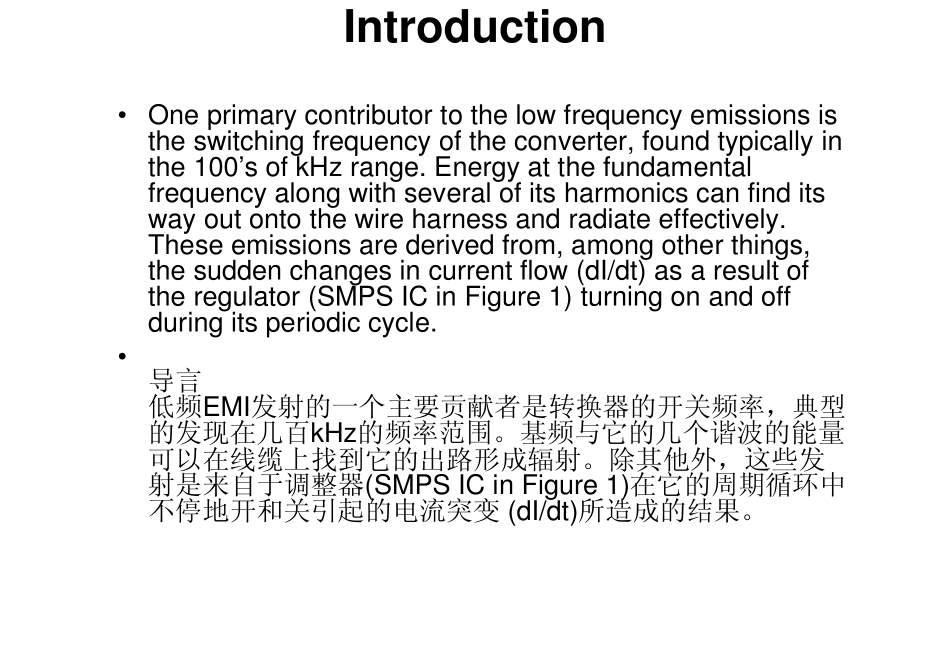Reducing Emissions in the Buck Converter SMPS减少Buck变换器开关电源的EMI发射Abstract•Switched Mode Power Supply demands are increasing, as the electronics industry requires more DC-DC conversion. In the past, linear regulators have been used to regulate power, but as the difference between supply voltages and desired output voltage increases, they become very inefficient. The BUCK power supply is efficient in converting higher voltages to lower voltages, but unfortunately in the process, both change in current (dI/dt) and change in voltage (dV/dt) are experienced. These changing parameters can cause excessive emissions in the RF spectrum, in conducted and radiated forms. We will examine the modes under which these emissions areallowed to propagate, and investigate techniques used to reduce them.•开关电源的需求正在增加,如电子行业需要更多的DC - DC转换。在过去,常用线性稳压器,但随着电源电压和所需的输出电压之间的差额的增加,它们变得非常低效。BUCK降压型电源在将高电压变到低电压时有更高的转换效率,但不幸的是,在这个过程中,电流的变化( di / dt )和电压的变化( dv / dt )都是经常的。这些不断变化的参数可能会以传导和辐射的形式造成超标发射的RF频谱。我们将研究发射被传播的模式,调查减少它们可采用的技术。Introdu ction• One primary contributor to the low frequency emissions is the switching frequency of the converter, found typically in the 100’s of kHz range. Energy at the fundamental frequency along with several of its harmonics can find its way out onto the wire harness and radiate effectively. These emissions are derived from, among other things, the sudden changes in current flow (dI/dt) as a result of the regulator (SMPS IC in Figure 1) turning on and off during its periodic cycle.•导言低频EMI发射的一个主要贡献者是转换器的开关频率,典型的发现在几百kHz的频率范围。基...


